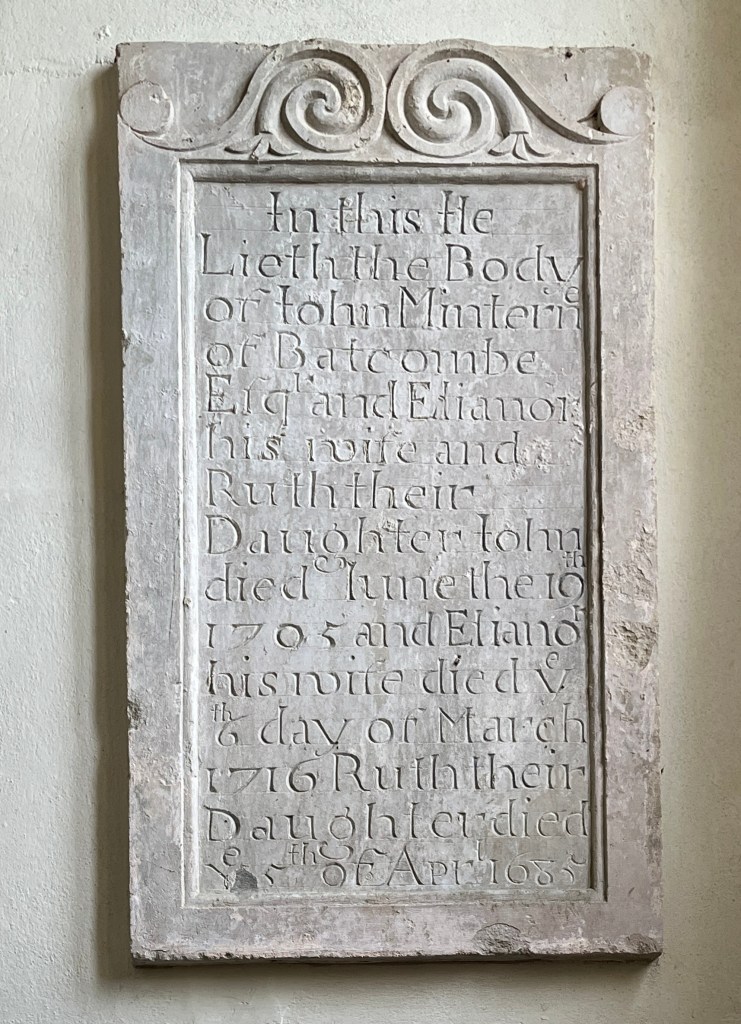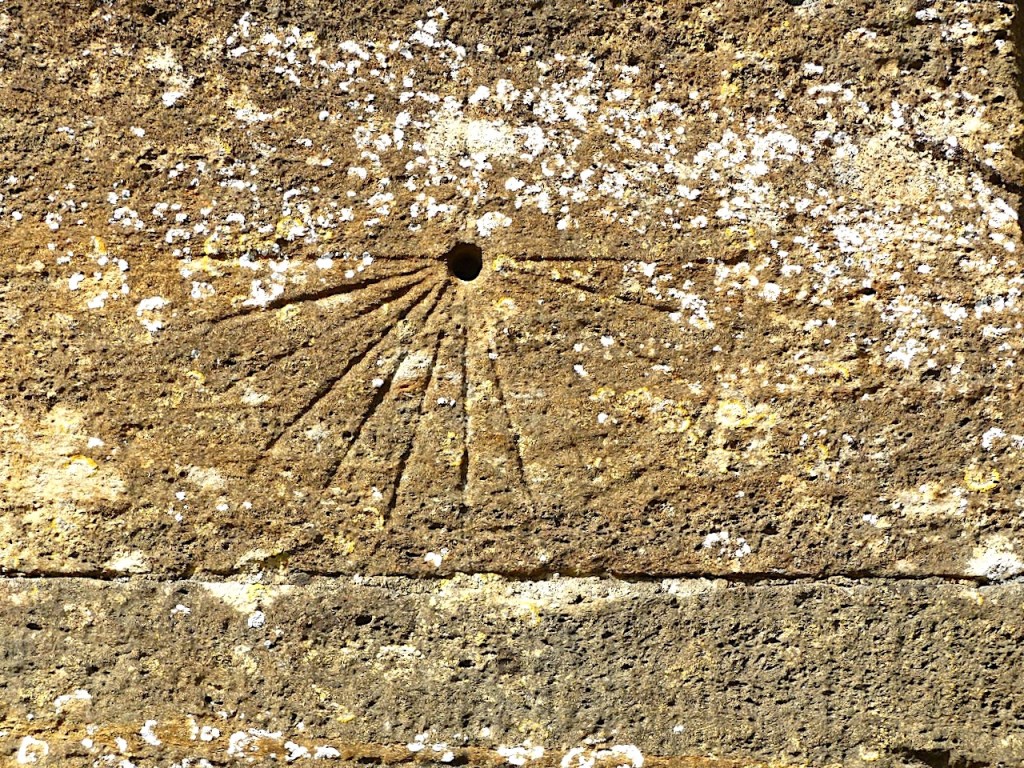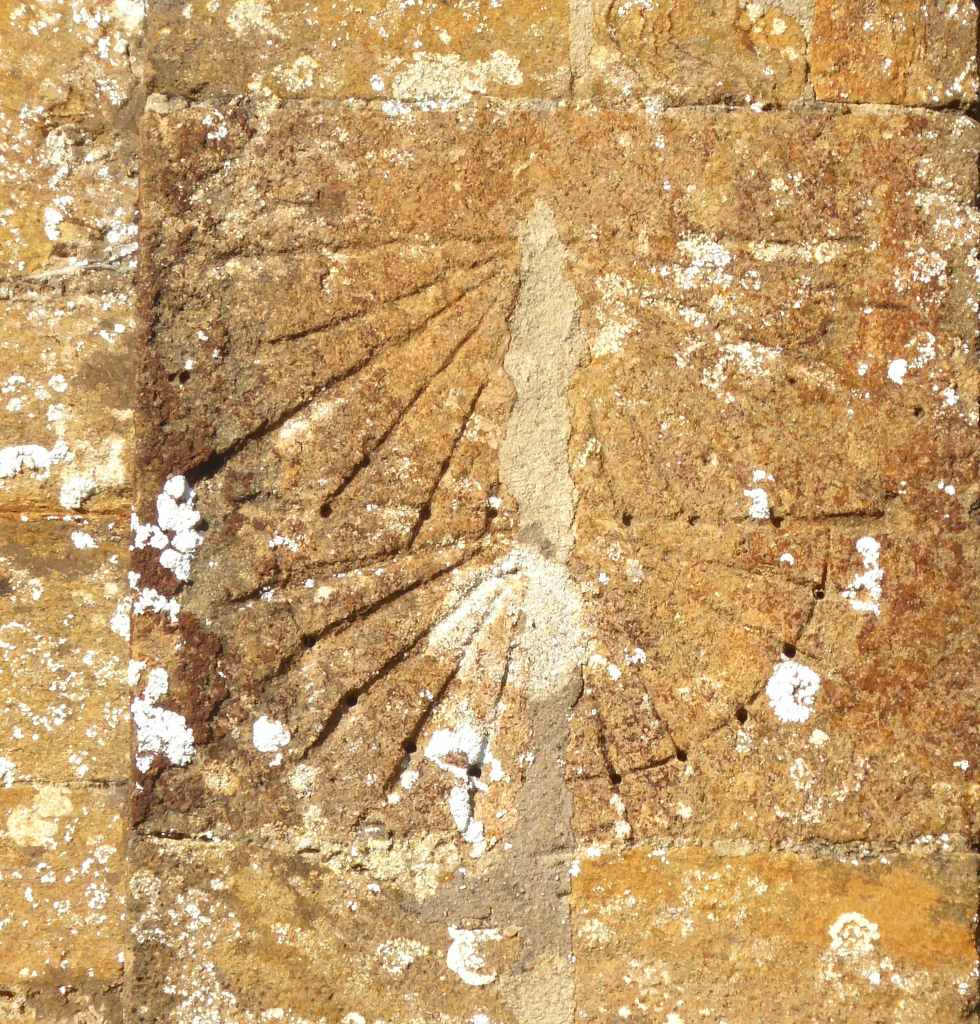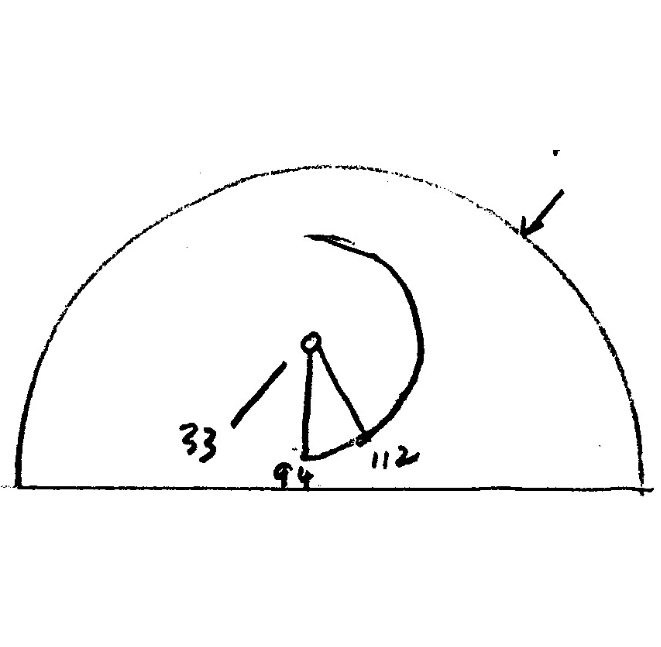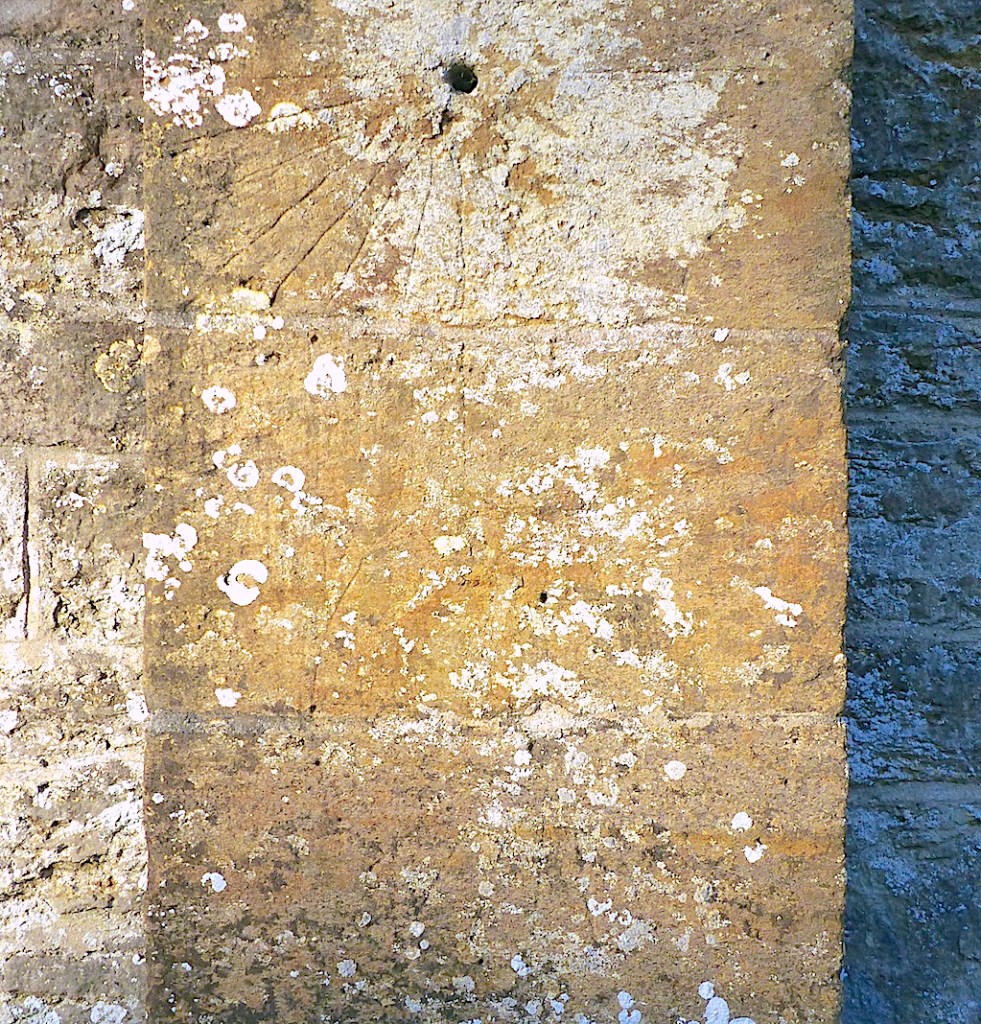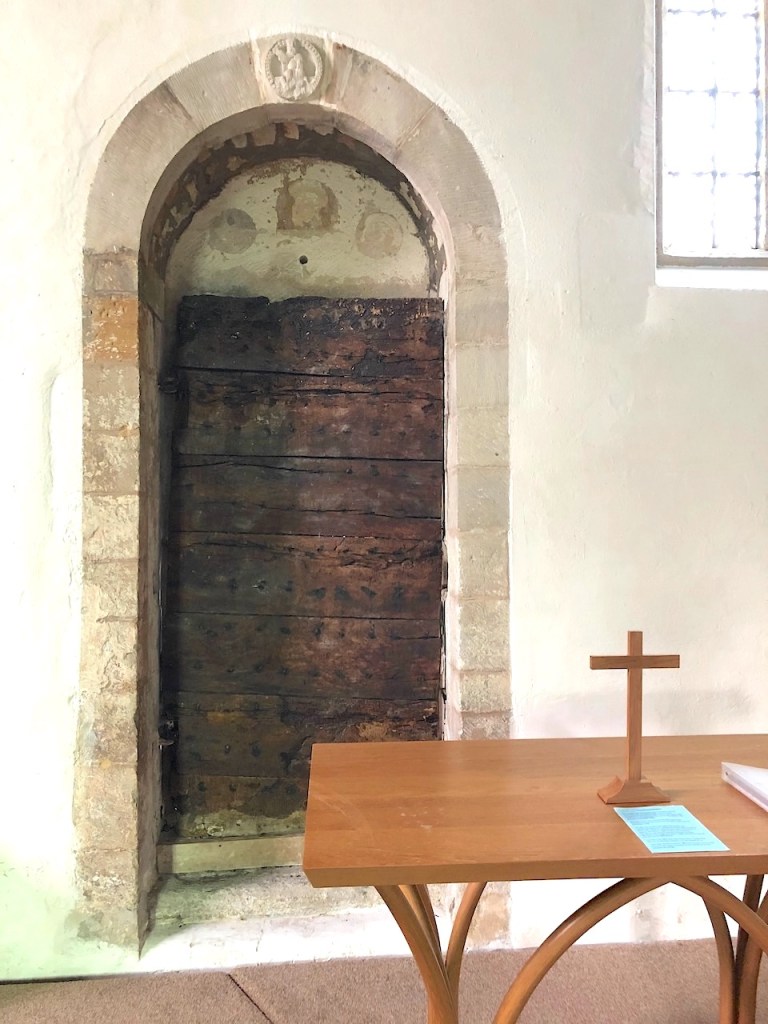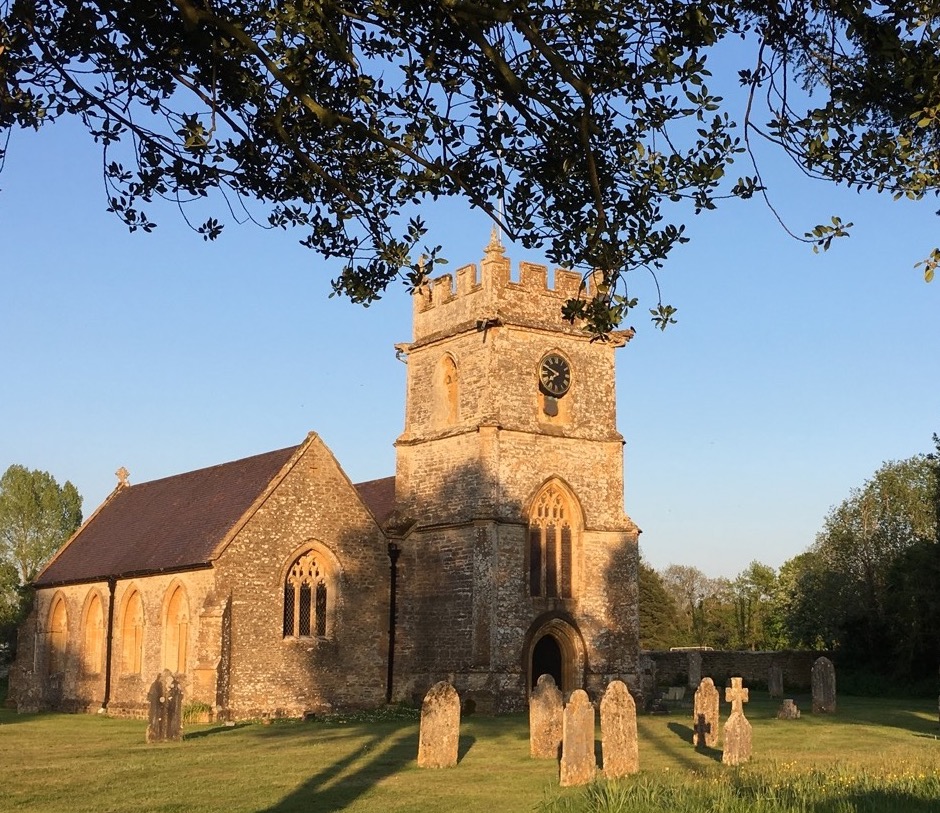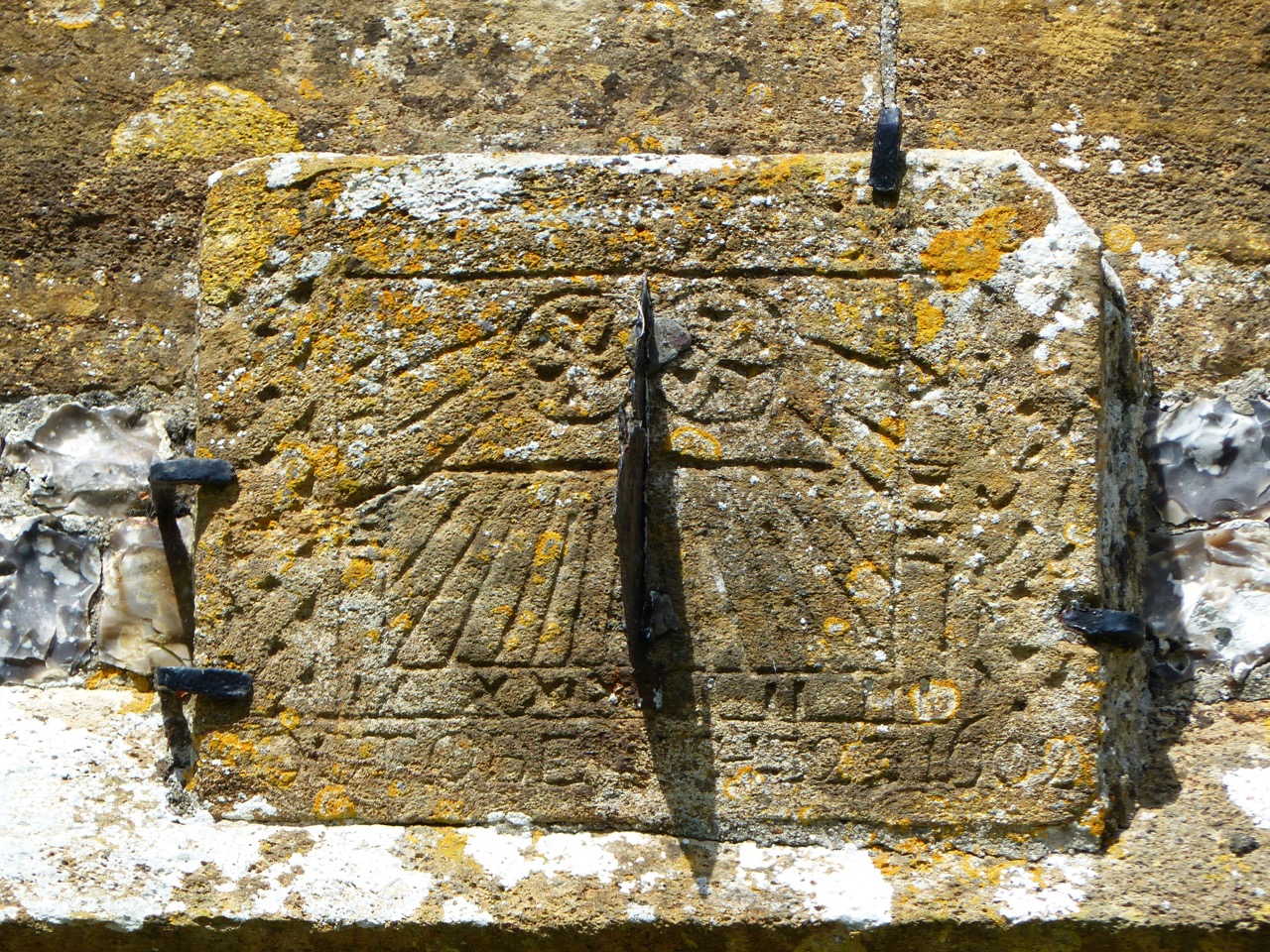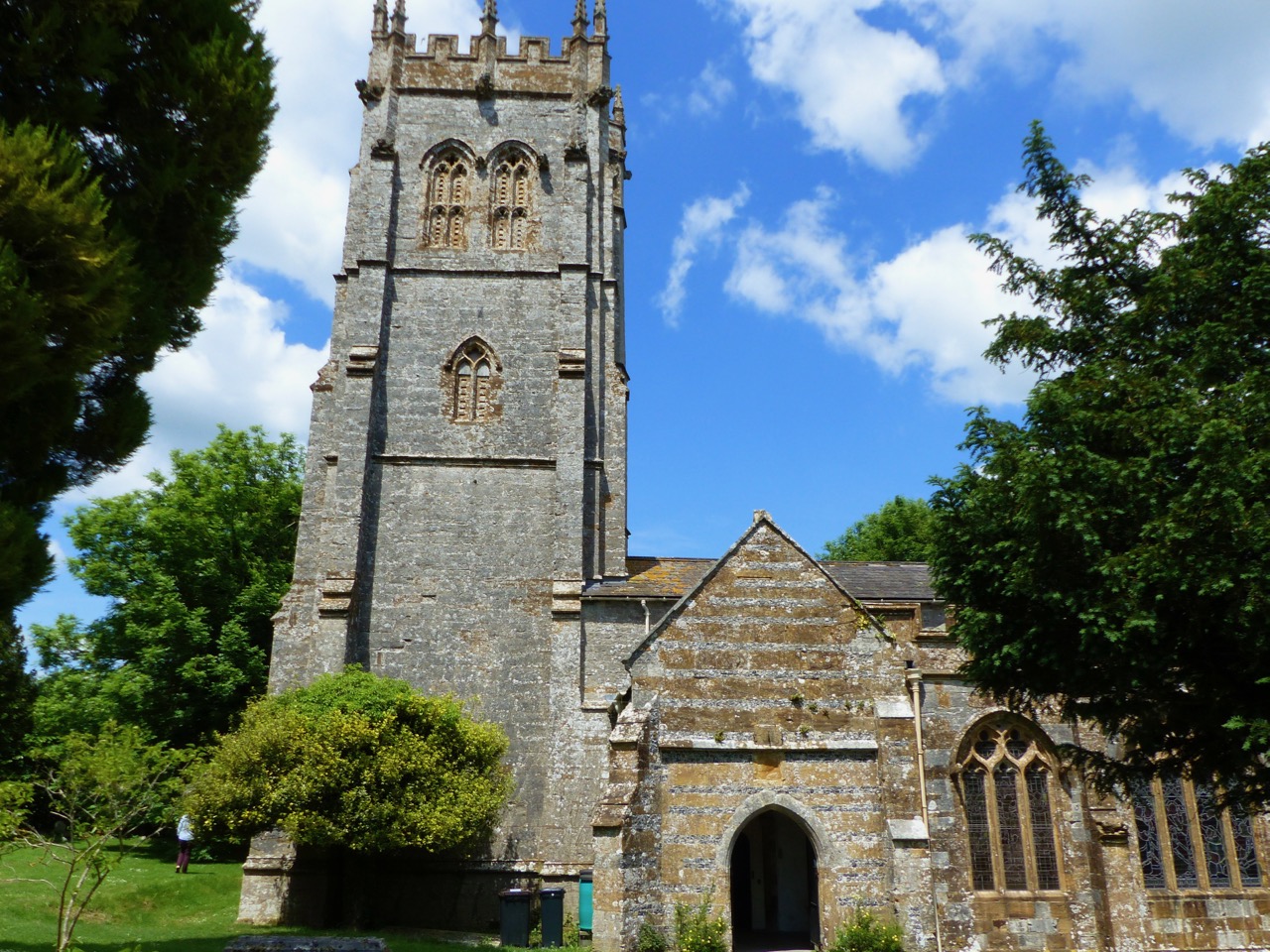
Category: CHURCHES & ABBEYS
MEMORIAL TABLETS . ST MARY . BATCOMBE . DORSET
DELAYED POST

This blog was started in 2012 and was originally intended to be an omnium gatherum of specific and conceivably interesting categories. The menus below mostly had sub-menus. The blog was a spin-off from a more time-consuming effort that took priority.


I never posted very regularly, and I didn’t promote the site. Looking back at my stats, I can’t help noticing that, even by 2015, I was excusing myself for long gaps between posts. I see that 2017 was the last year that I made regular posts. In the last 5 years there have been 30 short posts – none at all for the last 2 years.

It could easily be argued (I do so with myself sometimes) that I should quietly put the blog out of its misery and delete it. However, several thousand people a year visit the site and possibly find something of interest, entertainment – or even the exact thing they are looking for.
So I have decided to leave things as they are, at least for the time being. And thanks to those who have visited, even if only once…

If you are interested in Sundials of all kinds and / or Medieval Churches, there’s a properly working blog HERE
If you have an interest in natural history elsewhere in the world – birds, reef fishes, marine mammals – try HERE
MEDIEVAL SCRATCH DIALS ON DORSET CHURCHES
Medieval scratch dials were cut into the stones of churches from Saxon times until around 1600, by which time they had been outcompeted by clocks. In the briefest summary, these scratch (or Mass) dials were primitive ways by which a medieval community, mostly uneducated, could tell or (more accurately) keep the time. All that was needed was a hole, a stick, a nail and some sunshine.
The concept of time as we know it did not exist early medieval times. Days were measured by the passage of the sun. Each community would have had its own daily rhythms. The earliest primitive scratch dials on country churches were the first public indicators of the day’s progress, and (later) the times of Mass. Designs gradually became more ambitious and elaborate. Scientific advances produced more technical and accurate dials, for example by graduating the space between the lines (radials) to allow for the declination of the sun; or bending the gnomon to adjust for latitude. Some later dials include decorative details. There’s a great deal more to be said on the topic, and some of it can be found at a new project called GAUDIUM SUB SOLE
Dials are often eroded, damaged, or both
The central hole for the gnomon (or ‘style’) is frequently filled in
Dials, for obvious reasons, are most usually found on the south side of a church. Favoured locations are the porch, the priest’s door, and a S. or SW. facing buttress. In some cases – especially on buttresses – more than one dial was incised. St Mary Bradford Abbas has an unusual example of large, similar dials overlapping. Repairs, as here, are often unsympathetic.
The second image shows a previously unrecorded dial, inverted, that I noticed high up on a corner tower. Stones with dials were often relocated as churches were reshaped and expanded. There’s a good example at CHARMINSTER. I’m beginning to suspect a correlation between a relocation and an inversion, almost as if to make clear the repurposing of the stone from time marker back to masonry.
A significant number of churches have multiple dials. Winterbourne Stoke (Wilts) has between 8 and 12, depending on individual interpretation. Some, including me, are keen to view any round hole as a potential style hole; and any random straight incision as a radial. Multi-dial churches are worth a close inspection. Rimpton has 4 recorded dials: I have visited twice recently and there are undoubtedly 2 more.
St Laurence, Holwell has 3 dials in a group on a buttress. Two are quite large and sophisticated. In the top half of the faintly encircled lower dial, there’s a small more rustic dial as shown in the diagram above (you can just see the style hole on the photo)
All six churches featured here are in the Three Valleys Benefice
Photos: Keith Salvesen sundails@gaudiumsubsole.org
GARGOYLES . ST ANDREW . YETMINSTER . DORSET
Three excellent gargoyles at the Church of St Andrew, Yetminster, where I was photographing scratch dials and medieval graffiti. There is one gargoyle at each corner of the C15 tower (the fourth was in shadow). These ‘grotesques’ were decorative in its broadest sense, and (unlike the similar hunky punks) also functional. One practical use for a gargoyle – the most usual – was as a water spout. An additional purpose was to protect the church and its precincts by repelling evil. Broadly speaking, the message they gave malevolent spirits was both ‘thou shalt not pass’ (protective) and also ‘get thee hence’ (repellent).

Most gargoyles represent creatures. Some are recognisable (usually with added malice); and others are completely monstrous. Some have both animal and human attributes. There may be disagreeable activity taking place or threatened. Good examples are the two below. In each a small human is attached to a large vicious beast, and in grave peril. In the first, a man is uncomfortably slung below the fanged beast, assessing the very long drop to the ground. In the other, the beast is equally scary and the man, semi-attached, is equally terrified. What evil spirit would take a risk with hexing this awesome (in its original meaning) church?

There’s one additional feature that I noticed only when I saw the images onscreen. In the first, the little man’s penis can be seen, and is obeying the law of gravity. The second it is not so clear-cut (as it were), but the bulge in the groin area may suggest a small and better endowed man. The display of stone genitals on medieval church carvings was yet another way in which evil could be held at bay or sent packing. The sheela-na-gig is the distaff example of the principle.

EARLY DOORS: MAIDEN NEWTON – ST MARY’S CHURCH

MAIDEN NEWTON, DORSET lies in a chalk valley at the confluence of the River Frome and its tributary the Hooke. The Church of St Mary is of particular note, dating from the C12 with earlier Saxon origins. The interior was badly damaged by fire in 2011, and has been rearranged – understandably – as a largely open space, but not fully restored. Many treasures were fortunately unscathed; one in particular received special treatment from the fire crews that saved it.
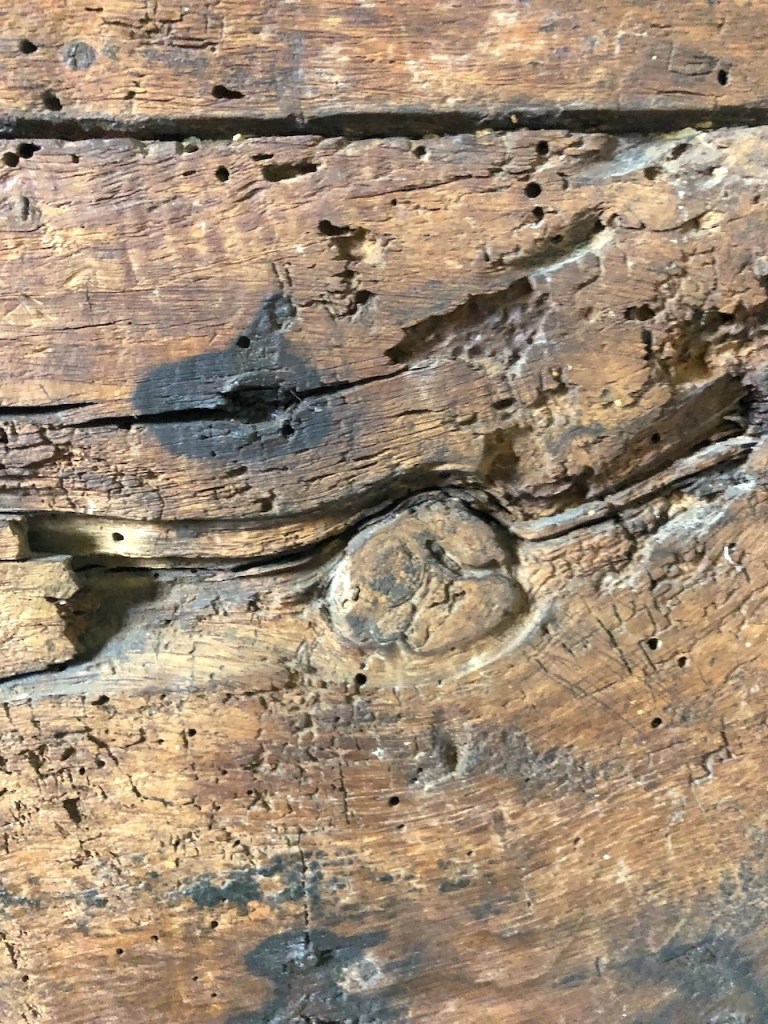
Behind the new Altar is an ancient wooden door set into the narrow arched north doorway. A plaque states that this is ‘the oldest door with original hinges in the country’. One theory is that the door is pre-Conquest, later incorporated into the Norman church built sometime between in the late C11 and 1200. Owen Morshead dates it C12; Pevsner describes it a ‘a good early door‘. So it is certainly early medieval and – whether or not actually the oldest door with original hinges – it is remarkable for its battered beauty and its overall condition.
A report of the 2011 fire and its aftermath states that “four fire crews initially used an aerial platform to avoid damaging the original doors and hinges, thought to be among the oldest in England”. On any view, it is almost certainly the oldest medieval door hung on its original hinges to have survived a major fire without damage.
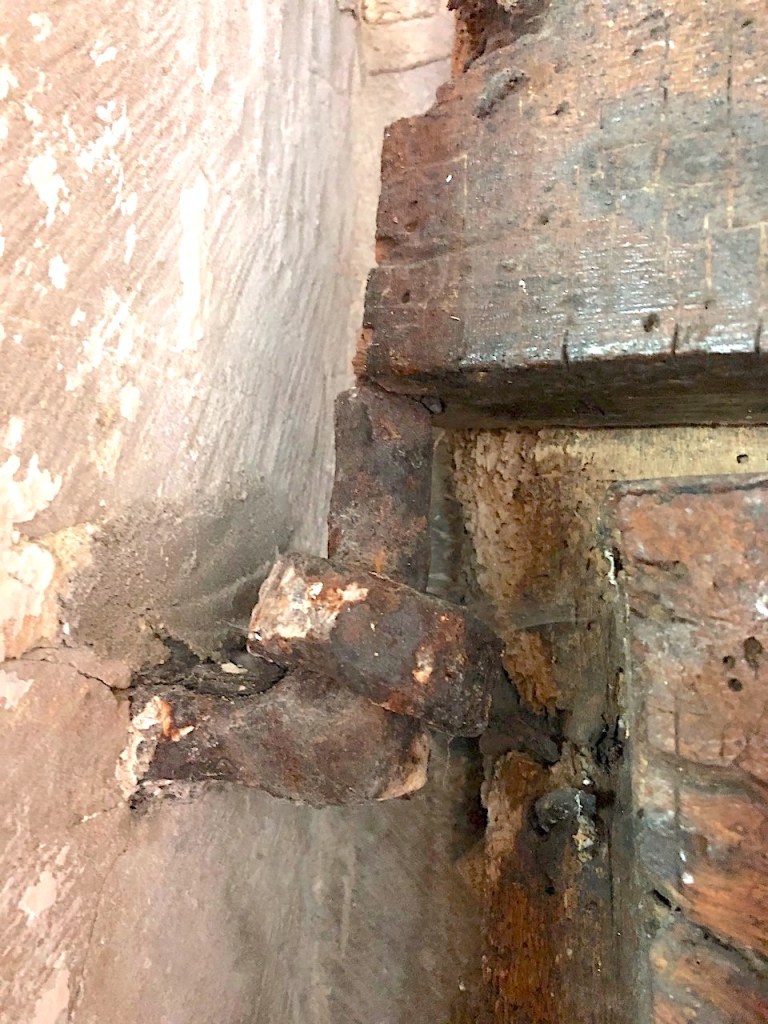
HUNKY PUNKS & GARGOYLES

HUNKY PUNKS
The image above shows a Hunky Punk. These strangely-named grotesques are found on churches in many areas of the country, especially Late Gothic ones. Usually where there is one hunky punk, there will be several (as with gargoyles). Sometimes, there may be a lone one lurking over a buttress or above a porch.

Different regions have different names for these intriguing ornaments. The name hunky punk is associated most strongly with Somerset, and more broadly with Wessex. They range from the dramatically gross to the disconcertingly lurky (see above). There’s nothing anodyne about them.

Wherever they are found, hunky punks all have a common factor: they are distinct from gargoyles. They may be very similar in design and style, but they have different functions. Gargoyles are working grotesques, usually acting as outlets for rainwater on church roofs. A length of lead pipe – or metal or (occasionally / regrettably) plastic – is the sign of a gargoyle. This usually but not invariably protrudes through the stone mouth.

A hunky punk, on the other hand, has a purely decorative function. One might dignify it with the term ‘architectural feature’. But then so is a gargoyle. Confusingly, where several grotesques are found, eg on a tower, only one or two may be functional gargoyles and the others not. Here’s an example where it is easy to tell which is which. The hunky punk appears to be praying with some distaste; the water drain (non-gargoylic) is separate.**

There are a number of theories about the purpose of hunky punks, absent a water spout function to make them useful as gargoyles. Symbols of (benign) evil to counterbalance the prevailing piety of the church precincts. Sculpture practice for trainee stonemasons. Caricatures of priests or local people; or perhaps representing Parish folklore .

My current favourite hunky punks are from St Mary’s Charminster. This church deserves a post in its own right, not least because it also has 2 medieval scratch dials (my current project), one of which was moved from the south side and replaced upside-down on the wrong face of the building.

While other more distant projects are marking time, I am currently investigating Wessex churches – strictly within prevailing Covid rules, obviously. So there’ll be more posts along these lines in due course, mostly about exterior features.
** This one may be a double bluff. It’s possible that the modern water spout to the side replaces an old pipe that emerged from the clasped hands of the priest, and channelled the rain water even as he prays. On the other hand, the aperture isn’t quite right for that. I need to check that tower again to see if any of the other 3 are water-spouting gargoyles…
Churches: Rampisham – St Michael & All Angels (1); Bradford Abbas – St Mary (2, 3); Nether Compton – St Andrew (4); Leigh – St Andrew (5); Trent – St Andrew (6); Charminster – St Mary (7, 8)

BENCHMARKS: SHERBORNE ABBEY, DORSET
Sherborne Abbey – The Abbey Church of St Mary the Virgin – is one of England’s great churches, founded in AD705. The mellow stone beauty of the exterior and the outstanding fan vaulting (let alone its other glories) secure its primacy as a place of worship, of religious and architectural study, and of inspiration for the community it serves.
It also has a clearly incised benchmark, the bathetic subject-matter of this post as foretold in the title. It’s a strangely humble feature to focus on, but the attempted revival of this blog will include such mundanities. More interesting will be the medieval scratch dials (crude early sundials carved on church walls or doorways) that I am currently working on.
All photographs © Keith Salvesen
ST PETER’S CHURCH, CHETNOLE, DORSET
St Peter’s, Chetnole is a pretty and very typical rural Dorset church with a long history. It is at the heart of the village, and the popular village pub is close by. The openness of the churchyard is one of its attractions, and helps the church to be seen to its best advantage.
St Peter’s dates from c13, including the nave, the south door and a lancet window. Later features date mostly from c15 including the barrel vault and the tower, which was rebuilt at least in part in the c16. The four gargoyles on the tower are of particular note. The south porch is later. In the mid-c19, the church was enlarged (controversially, apparently) with the addition of the north aisle, and the chancel was refurbished. The clock was installed in soon after (and remains reliable). I couldn’t find the trace of a medieval scratch dial, though (see Sundials) other local churches have one.
The bells are of particular interest, with the first and second of the three being among the oldest in Dorset. They were cast by a London founder, William Chamberlain, in about 1500 and inscribed respectively: wox augustinae sonet in aure dei (‘the voice of Augustine speaks in the ear of God’), and sante laurenti ora pro nobis (‘St Lawrence pray for us’). The third (tenor) bell was cast in 1865 by John Warner and Sons of London, and weighs about 8cwt. The fittings are not suitable for ringing, so the bells are chimed.
St Peter’s is worth making a detour for if you are in the area, not least because of its attractive setting, and after visiting the church the proximity of the pub with its ales, food and garden for those with a thirst after righteousness to quench.
Photos: Keith Salvesen; Info adapted from Three Parishes Benefice’s informative website
A MEDIEVAL MASS DIAL IN PIDDLETRENTHIDE, DORSET
The village of Piddletrenthide in Dorset lies by the upper reaches of the River Piddle, Dorset’s most amusingly named river. Like its close neighbour, the larger River Frome, the Piddle flows roughly ESE to Poole Harbour. Piddletrenthide is an interesting village for many reasons, but I am heading straight to the northern end, to All Saint’s Church which dates from C12. And I’m zeroing in on the porch.
 As you can see, centrally above the porch entrance is, firstly, a badly degraded tablet (only the letter A is clearly visible). Above it is a fine, well-defined sundial. Probably, the experts would not call it a mass dial at all, since it is not actually cut into the church’s stonework, but is on its own block stapled (now anyway) to the church wall. As British History Online (a great resource) puts it, Sundial: Above entry to S. porch, rectangular stone slab with enriched border, Roman numerals, wrought-iron gnomon and date 1602.
As you can see, centrally above the porch entrance is, firstly, a badly degraded tablet (only the letter A is clearly visible). Above it is a fine, well-defined sundial. Probably, the experts would not call it a mass dial at all, since it is not actually cut into the church’s stonework, but is on its own block stapled (now anyway) to the church wall. As British History Online (a great resource) puts it, Sundial: Above entry to S. porch, rectangular stone slab with enriched border, Roman numerals, wrought-iron gnomon and date 1602.
There’s no doubt about the date. ‘1602’ is completely clear, though the preceding inscription is harder to decipher. By sight, I could only clearly make out the words TO BE, as mentioned by the British Sundial Society (see below). Photographs taken on a sunny day reveal more, and I have done a bit of work on one of them – making it black and white for a start. I believe the legible part of the inscription reads OCTOBER ? ? 23 (possibly 1523). A ladder might make the task of completing the inscription easier!
The design is rather more sophisticated than earlier dials. For a start, marking the canonical hours is by now a thing of the past; this dial is on the 24-hour clock that arrived with the early timepieces. The dial marks from 6am to 6 pm, but it is old enough for IV to be rendered as IIII. Also, this is a ‘scientific dial’. With very early dials, the distance between the markers was equal, an inherently unreliable system throughout the year. Gradually, dials acquired graduated markers that narrowed towards the lowest mark, and widened after it. This provided greater accuracy. Among the earliest – if not THE earliest example – is at LITLINGTON CHURCH in East Sussex.
The above photograph shows the stubby gnomon. I assume it is not the original one. I must have taken this photograph around midday. The face is decorated with a lattice design on both sides, the right side being rather more worn. In addition there are two attractive roundels with a design I can’t make out. A Maltese cross, perhaps? The British Sundial Society describes the dial thus: Shows 6am to 6pm in half hours. Two circular motifs cut into either side of gnomon, decoration cut into dial sides. IIII for 4pm. Triangular sheet gnomon with lead fixings – possibly not original. A possible inscription at bottom “.. ..To Be.. ..” .
All Saints is a fascinating Church, both outside and inside. There are many inventive gargoyles and other carvings; and the interior is very rewarding. Another post about this church will follow in due course. Meanwhile, as a side note, the Piddletrenthide Parish Records detail a most interesting fact that will have me revisiting the church for sure: The first known use of Arabic numerals can be seen in an inscription on the west door of the church tower ‘Est pydeltrenth villa in dorsedie comitatu Nascitur in illa quam rexit Vicariatu 1487’. The use of Roman numerals continued in Europe for at least another century so it is quite something to find Arabic numerals inscribed over a doorway in a small village in Dorset.



